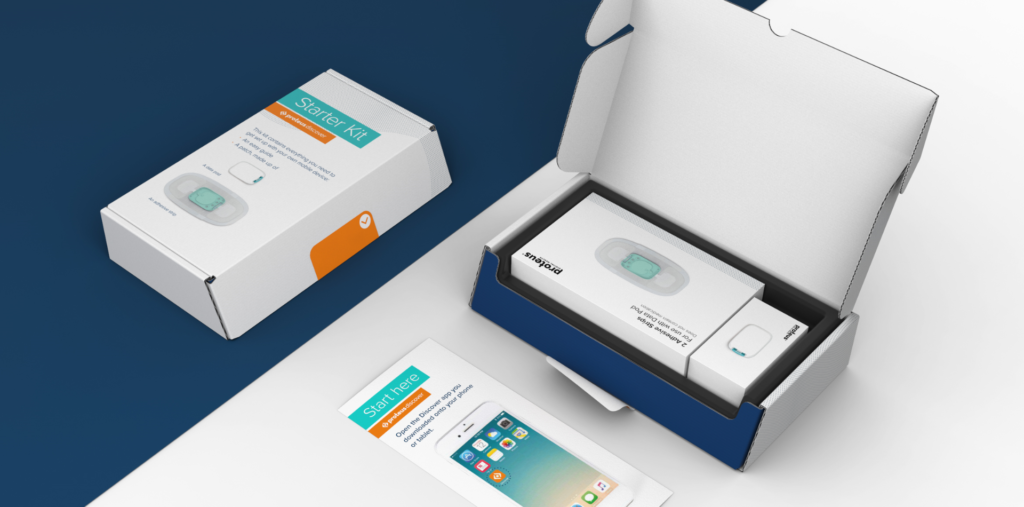In line with the NHS Long Term Plan, the future of healthcare is increasingly shifting toward in-home treatments, enabled by advanced wearable technologies. These devices not only provide vital health monitoring but also assist individuals in becoming proactive about their own wellness. This home-centric approach is critical, given the strain on healthcare facilities like the NHS, which experienced unprecedented demand in November 2021 with emergency rooms treating over two million patients—half a million more than the same period a year earlier.

Healthcare packaging for Proteus Digital Health
Fortunately, emerging technologies in at-home healthcare present exciting opportunities for more efficient and effective treatment. Studies, like those by AJMC, affirm that home-based healthcare is both quicker and more effective in many instances. From medication tracking and sleep monitoring to post-surgical rehabilitation and dementia care, these devices offer the promise of enhancing quality of life while reducing hospital visits.
Being treated in the comfort of one’s own home offers the psychological benefit of a familiar environment, particularly during times when hospital visits can cause anxiety, such as the recent pandemic. Moreover, at-home treatments are logistically easier and less costly for patients. This flexibility also facilitates participation in clinical trials, offering a hybrid model that combines hospital and home-based care.
However, the successful adoption of these medical technologies is contingent on their design being harmonious with people’s home settings and emotional well-being, not just their medical needs. Devices should blend seamlessly into domestic life, avoiding the institutional feel of hospital equipment. Medical product design should be about more than just functionality; it needs to respect the sanctity of the home.
Companies like Luas Diagnostics are already leading the way in this arena, offering patient-friendly medical product designs. Their drug-management system, for example, is discreet enough to be hidden away, recognizing that most people would prefer not to have such devices in plain view.
It’s crucial to address both the psychological and physical needs of end-users as medical device product development advances. As remote healthcare delivery grows, patients are assuming more responsibilities, from spotting early warning signs to managing long-term treatments. Medical devices must be intuitively designed to minimize user errors and alleviate apprehensions about their usage. This is particularly crucial for devices used in long-term treatment plans, where user compliance is key.
By adopting a user-focused approach in medical device design, companies can make remote patient care smoother and more effective. Comprehensive, straightforward instructions and user-friendly packaging can help mitigate user concerns, especially when healthcare professionals are not directly involved. For instance, the ingestible sensor by Proteus includes a well-planned unboxing experience and simple guidelines to make setup less daunting for users.
In summary, as the focus shifts from hospital-centric to home-based healthcare, medical device designers and developers need to prioritize user experience, aesthetics, and emotional well-being along with device functionality. The home is not just a location but a sanctuary, and the medical devices that find their way there should enrich, not disturb, this fundamental space. Therefore, the future of healthcare depends not just on technological innovation but also on the ability of medical product designers to encapsulate these technologies in objects that contribute to, not detract from, the home environment.
Want to know more?
If you’d like to talk to us about what we do or tell us about a new project, send us an email at:
We’d love to hear from you.
Read more of our news
Making Packaging Part of the Remedy
Tone co-founder Oscar Daws talks to Dieline about the medical sector and the opportunity for packaging to play a more critical role—to form part of the very product itself.
Read more